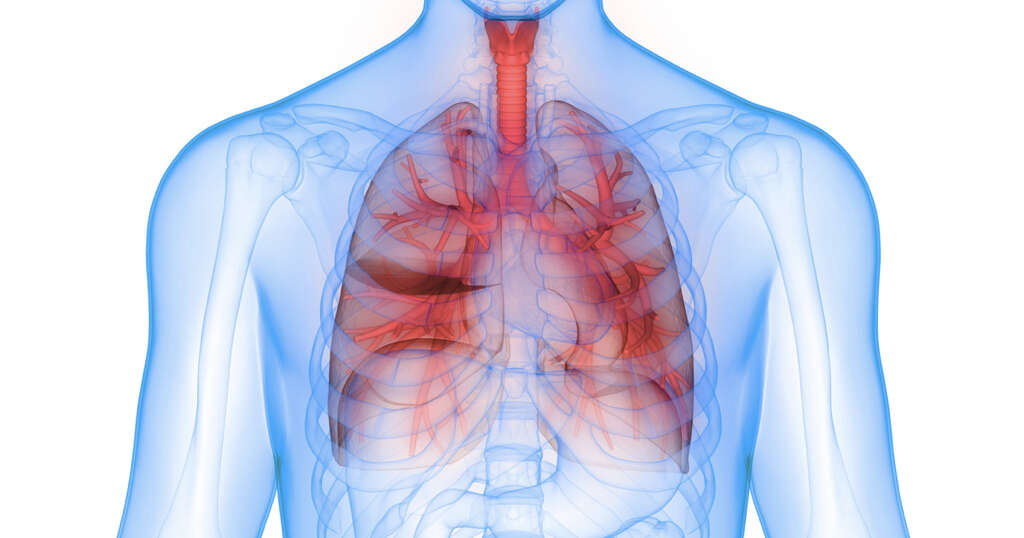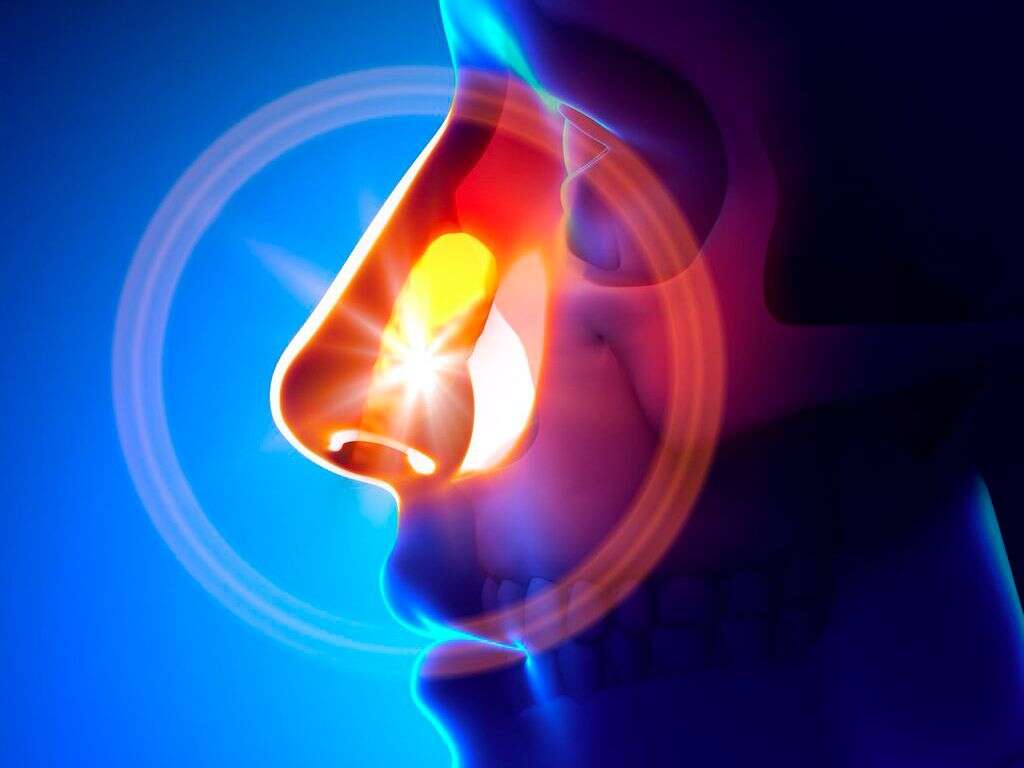What Is Bronchitis?
Bronchitis is an inflammation of the bronchial tubes. These are the airways that carry air to the lungs. The condition is characterized by a cough that often brings up mucus. Bronchitis is one of the leading conditions for which patients seek medical care. It is categorized as either acute or chronic bronchitis.
Acute bronchitis lasts a few weeks and usually goes away on its own. Chronic bronchitis is a more serious and long-term condition, lasting longer than 3 months a year for more than two consecutive years. Person’s with bronchitis can experience difficulty breathing. They may also find it difficult to clear the heavy mucus or phlegm from their airways. Chronic bronchitis is part of the conditions collectively referred to as COPD or chronic obstructive pulmonary disease.

1. Symptoms of Bronchitis
Bronchitis usually manifests with a cough. Occasionally, this cough becomes productive. The sputum produced can be any color from clear to white, yellowish-green, gray, or green. Less common symptoms include malaise, muscle aches, sore throat, shortness of breath, chest pain, fever, and chills.
Patients with acute bronchitis can experience persistent cough that can last up to 20 days. In chronic bronchitis there is an excess production of mucus by mucus-producing glands in the mucosa of the airway, which causes a progressive airflow limitation. Patients with chronic bronchitis exhibit a productive cough lasting at least 3 months with recurring bouts for longer than 2 consecutive years.

2. Causes of Bronchitis
Acute bronchitis is usually caused by respiratory viruses. Acute bronchitis develops when these viruses irritate the bronchial lining. They may also impair the function of hair-like projections, known as cilia, that move microbe, and debris up and out of the airway. Thus, airways can become obstructed by debris and subsequently by mucus (due to excess mucus production) causing the characteristic productive cough.
Note that medications used to treat bacterial or fungal infections do not work against viruses, which means that treatment for acute bronchitis in healthy individuals is not recommended.

3. Irritants
Chronic bronchitis is highly associated with smoking. One of the major functions of mucus in the airways is to protect the lung through clearance of foreign particles (i.e. irritants) entering the lung. Therefore, the logical response of the airway, after continuous exposure to irritants, is to promote the growth of its mucous glands. This results in excessive production of mucous which leads to the productive cough seen in patients with chronic bronchitis.
Furthermore, smoking also impairs the function of respiratory cilia, which constitutes another important clearance mechanism for the airway. Another factor that may lead to COPD is long-life exposure to biomass smoke. This includes the smoke produced by biomass fuels like wood and coal, that are used for cooking daily.

4. Other Diseases Mistaken for Bronchitis
Bronchitis can be mistaken for other conditions. This can mean that the medical care given might be inappropriate and, therefore, unhelpful. A patient with bronchitis may experience difficulty in breathing. This is a common symptom of pneumonia. Without a proper physical examination and workup, bronchitis can be mistaken for pneumonia.
Other conditions for which bronchitis may be confused with include asthma, allergies, influenza, bacterial or viral pharyngitis, acute sinusitis, and bacterial tracheitis.

5. Complications
Complications rarely occur in patients with acute bronchitis. Bacterial superinfection can occur in patients with acute bronchitis. In short, a superinfection is a second infection (generally bacterial) that can be superimposed on an earlier one (i.e. viral), especially by a different microbial agent. Moreover, acute bronchitis can lead to blockage of the airways in the lungs and ultimately cause pneumonia in 5% of patients with bronchitis.
Finally, repeated episodes of acute bronchitis can result in chronic bronchitis. Complications in patients with chronic bronchitis include infection (common), malnutrition, pulmonary hypertension, cor pulmonale (a condition that causes the right heart to fail), and more.

6. Disease Process
Bronchitis, especially chronic bronchitis, is a long-term condition. Patients with this disease can commonly experience acute exacerbations of symptoms (most common cause are respiratory infections) superimposed on chronic disease. COPD is usually secondary to chronic tobacco use, however other diseases like cystic fibrosis, bronchiectasis, and alpha-1 antitrypsin deficiency are known causes as well. Conversely, acute bronchitis is a different condition that can affect any individual.
Acute bronchitis can start with symptoms that resemble a common cold. But, unlike a cold that goes away within a few days to a week, the productive cough seen in patients with bronchitis goes on for many days or weeks. In the case of acute bronchitis, the cough finally clears with or without medication.

7. Diet and Lifestyle Changes to Ease Bronchitis
For chronic bronchitis, smoking cessation and avoiding any type of respiratory tract irritants can improve a patient’s condition and general prognosis. In COPD patients with gastroesophageal reflux disease (GERD), diet modifications can be helpful to reduce symptoms of the condition, since these can increase the risk of acute exacerbations.
Physical activity can be recommended for certain groups of patients with COPD.

8. Diagnosis
Acute bronchitis is not easy to diagnose because its symptoms are like those of several other conditions. Bronchitis can also occur while a patient has another disease such as asthma, which can make it difficult to diagnose. Given that more serious conditions can cause a similar cough, acute bronchitis must be a diagnosis of exclusion. When a patient with acute bronchitis visits a doctor, the doctor will listen to the patient’s breath sounds, take the patient’s medical history to find out the length of the coughing period, whether it recurs, the type of mucus produced, the living and working environments, and whether the patient smokes.
The doctor may also order some tests to determine whether the patient has a respiratory bacterial infection (i.e. complete blood count, Procalcitonin levels). Other studies can include chest radiography, influenza tests, sputum cytology, blood cultures and lung function tests (i.e. spirometry).

9. Treatment
Lifestyle changes can lessen symptoms and ease the discomfort in patients with chronic bronchitis. This includes avoiding triggers like smoking, and environmental pollutants whenever possible. Also, to decrease the incidence of respiratory infections, pneumococcal and influenza vaccinations are recommended. In acute bronchitis, therapy is usually oriented towards alleviation of symptoms. In both conditions, pharmacologic therapy for symptomatic treatment can be prescribed by a physician including central cough suppressants, bronchodilators, nonsteroidal anti-inflammatory drugs, antitussives, or mucolytics.
If a bacterial infection is suspected in COPD patients, antibiotic therapy can be used. In summary, treatment for COPD patients must be individualized. Any of these drugs can be prescribed by a professional according to the specific needs of each patient (i.e. symptom severity, frequency or risk of exacerbations, presence of other conditions). Finally, if a patient has serious breathing difficulties, adequate oxygen therapy or other airway management procedures may also be necessary.

10. Long-Term Outlook
The long-term outlook for chronic bronchitis varies for different people. While it has no cure, treatment with medications, and lifestyle changes can help improve quality of life and reduce exacerbations. When these are coupled with regular medical checkups, it is possible to reduce chances of complications or progression of the disease.
Patients with chronic bronchitis that are stable can require checkups twice a year, while patients with severe disease should be seen monthly.












